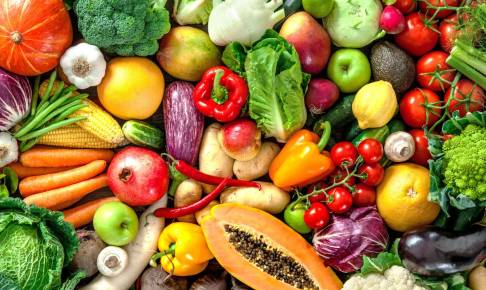Herbicides and their impact on antimicrobial resistance in the context of food and food safety
Author
Oluwatosin Akinwotu
Jovan Baryamujura
Nagarjuna Daram PhD
Javier Moreno Morales
Ramesh N
Maarten Van Dongen PhD
Rohini Wadanamby
Category
Pesticides
Introduction
Agriculture is important for a country’s economy. With increasing industrialisation and growing populations, land resources for cultivation are decreasing. Large amounts of chemicals are used worldwide to control pests and weeds and to increase crop yield. Indiscriminate use of herbicides and pesticides influences microbial processes. Soil microorganisms play an important role in biodegradation of chemicals. Constant exposure to these toxic compounds leads to the genetic modification of these microbes so that they develop specialised mechanisms to degrade the toxic substances. The genes that code the enzymes that metabolise toxic compounds are present on plasmids (Pérez-Valera et al. 2019).
Figure 1: Worldwide pesticide consumption by region from 1990 to 2017. Source: FAO
Antimicrobial resistance (AMR) is a phenomenon in which microorganisms resist the growth inhibitory action of antimicrobials. Microorganisms acquire multiple mechanisms to evolve against antimicrobial action. AMR is viewed mostly in clinical settings because it critically affects patient medical treatment. The environmental dimension leading to the genesis and spread of AMR is an important factor. Livestock, water, and soil are interconnected with the food that we consume. The majority of agrochemicals are easily dissolved in water or absorbed by soil and traces of these agrochemicals that remain on plants are sometimes consumed by animals or humans. The extensive use of agrochemicals at different levels in these environments leads to the accumulation of residues in the food chain. The vegetables, fruits, and farm products that we consume may have traces of chemicals that were used in their production process. The exposure of gut microbiota to these chemicals can trigger their genetic modification and lead to AMR. In this review article, we focus mainly on the impact of herbicides on AMR.
Herbicides
Chemicals are used in agriculture to protect crops from the deleterious effects of pests, insects, rats, and weeds. They are usually grouped into pesticides, insecticides, rodenticides, and herbicides. Herbicides are the most widely used chemicals in agriculture. They protect crops from weeds, which are generally other plants that affect crops (Holt 2013). The use of these compounds also exerts indirect damage on microorganisms present in the soil, like bacteria and fungi, potentially changing the ecological properties of microbial communities by targeting evolutionarily-conserved pathways (Liao et al. 2021).
The impact of herbicides on AMR development is alarming. Repeated herbicide exposure during weed control may select for increased herbicide tolerance in microorganisms and may vary among and within the species (Raino et al. 2020; Tothova et al. 2010). Herbicide tolerance may be achieved via genetic changes in the herbicide-targeted gene (Wicke et al. 2019) or non-target genes linked with generalised stress tolerance (Comont et al. 2020). There is a positive correlation between herbicide use and antibiotic resistance. Long-term herbicide exposure could indirectly drive antibiotic resistance evolution via cross-resistance evolution if the same mutati
Download content now





















